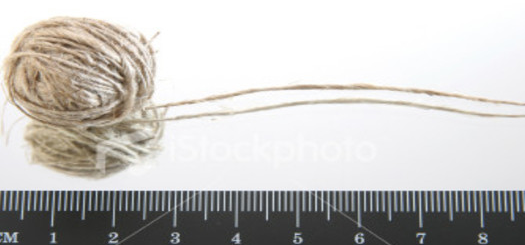Are you a pool owner looking to maintain crystal-clear water? One crucial aspect of pool maintenance is backwashing the sand filter. In this guide, we’ll walk you through how to backwash a sand filter.
A sand filter is a key component of a pool filtration system. It works by trapping debris and contaminants as water flows through a bed of sand, effectively removing impurities and keeping the water clean.
Importance of Backwashing
Backwashing is cleaning the sand filter by reversing the water flow. It helps remove trapped debris and contaminants, allowing the filter to function optimally and maintain efficient filtration. Here are ten important reasons why backwashing is crucial:
- Removes trapped debris: Backwashing helps to remove accumulated dirt, debris, and particulate matter from the filter media, allowing it to operate at optimal efficiency.
- Improves filtration efficiency: Over time, the sand filter becomes clogged with contaminants, reducing its ability to filter water effectively. Backwashing helps restore the filter’s efficiency by clearing out these impurities.
- Prevents pressure buildup: As debris accumulates in the filter, it creates a higher resistance to water flow, resulting in increased pressure within the system. Regular backwashing prevents pressure buildup, maintaining a balanced and efficient filtration process.
- Extends the lifespan of the filter media: Backwashing removes trapped contaminants from the sand, preventing them from compacting and reducing the effectiveness of the filter media. This helps prolong the lifespan of the sand, saving on replacement costs.
- Reduces chemical usage: When a sand filter is clogged, it requires more chemicals to achieve the desired water quality. Backwashing helps maintain proper filtration, reducing the need for excessive chemical treatments.
- Prevents channeling: Water flow can create channels or paths of least resistance through the filter media over time. Backwashing redistributes the sand, preventing channeling and ensuring even filtration throughout the filter bed.
- Restores water flow rate: A clogged filter restricts water flow, reducing circulation and potentially impacting the overall system’s performance. Backwashing helps restore the water flow rate, improving circulation and maintaining optimal water quality.
- Prevents bacterial growth: Stagnant water trapped in a dirty filter can become a breeding ground for bacteria and other microorganisms. Regular backwashing helps prevent the growth of harmful pathogens, promoting cleaner and safer water.
- Maintains water clarity: By removing suspended particles and impurities from the filter, backwashing helps maintain clear and visually appealing water, enhancing the overall aesthetics of pools, spas, or other water systems.
- Ensures equipment longevity: A properly maintained sand filter extends the lifespan of other equipment in the filtration system, such as pumps and heaters. By preventing clogs and maintaining efficient water flow, backwashing contributes to the overall longevity of the system.
Understanding Sand Filters
To effectively backwash a sand filter, it’s essential to understand how it works and its various components.
Working Principle of a Sand Filter
A sand filter operates on a simple principle. As water enters the filter, it flows through a bed of sand, where the particles and impurities get trapped while clean water passes through.
Components of a Sand Filter
A typical sand filter consists of several components, including the filter tank, the sand bed, a distribution system, and a multiport valve. Each component plays a crucial role in the filtration process.
Signs of a Dirty Filter
Recognizing the signs of a dirty filter is important to ensure timely backwashing. Here are some common indicators:
Reduced Water Flow
If you notice a significant decrease in water flow from the pool jets, it’s likely that your sand filter is clogged and in need of backwashing.
Cloudy or Discolored Water
Murky or discolored water is another telltale sign of a dirty filter. When the filter becomes overwhelmed with debris, it can no longer effectively clean the water, resulting in poor water quality.
Increased Pressure
A sudden increase in the pressure gauge reading on your filter system clearly indicates that the filter is under strain due to accumulated debris. Backwashing can help alleviate this pressure.
The Backwashing Process
Now let’s dive into the step-by-step process of backwashing a sand filter to restore its efficiency.
Step 1: Shutting off the Pump
Before starting the backwashing process, turn off the pool pump to ensure your safety and prevent any damage to the system.
Step 2: Changing the Valve Position
Next, locate the multiport valve on the filter tank and turn it to the “Backwash” position. This valve directs the flow of water through different stages of the filtration process.
Step 3: Running the Pump in Backwash Mode
With the valve set to “Backwash,” turn on the pump and let it run for a few minutes. You will notice dirty water being discharged from the waste pipe. Continue the backwashing process until the water runs clear.
Step 4: Rinse and Waste Cycles
After the backwash cycle, switch the valve to the “Rinse” position and run the pump briefly. This step helps settle the sand bed and remove any remaining debris. Finally, return the valve to the “Filter” position to resume normal filtration.
Frequency of Backwashing
The frequency of backwashing depends on several factors, including pool usage, water quality, and the filter’s size. Here are some general guidelines to follow:
Factors Affecting Frequency
- Pool usage: Higher usage may require more frequent backwashing.
- Water quality: If your pool is exposed to heavy debris or contaminants, more frequent backwashing may be necessary.
- Filter size: Larger filters generally require less frequent backwashing.
General Guidelines for Backwashing
As a rule of thumb, it’s recommended to backwash your sand filter when the pressure gauge reading is 8 to 10 psi above the starting pressure. However, it’s important to consult your filter’s manual for specific instructions tailored to your system.
Tips for Effective Backwashing
To ensure efficient backwashing and maintain a well-functioning sand filter, consider the following tips:
Preparing the Filter
Before starting the backwash process, check and clean the skimmer and pump baskets to remove any large debris. This helps prevent clogging and allows for better water flow during backwashing.
Following Proper Backwashing Techniques
When backwashing, follow the specific instructions provided by the manufacturer for your sand filter model. These instructions may include recommended backwash durations and additional steps for optimal results.
Post-Backwashing Maintenance
After completing the backwash process, perform routine maintenance tasks such as checking for leaks, inspecting the filter system, and cleaning the pump strainer basket. Regular maintenance helps ensure the longevity and efficiency of your sand filter.
Common Mistakes to Avoid
To maximize the effectiveness of your backwashing efforts, avoid these common mistakes:
Neglecting Regular Backwashing
Failing to backwash your sand filter regularly can lead to decreased filtration efficiency, poor water quality, and potential damage to the filter system. Make sure to adhere to the recommended backwashing frequency.
Using Incorrect Valve Positions
Improper valve positioning during backwashing can disrupt the filtration system and cause inefficiencies. Always follow the manufacturer’s instructions to ensure you’re using the correct valve positions.
Over Backwashing
While backwashing is essential, excessive backwashing can waste water and strain the filter system unnecessarily. Backwash only when necessary and follow the recommended guidelines for your specific filter.
Troubleshooting Backwashing Issues
Encountering problems during the backwashing process is not uncommon. Here are a few common issues and their possible solutions:
Low Water Pressure
If you experience low water pressure during backwashing, check for clogs in the skimmer, pump baskets, or impeller. Clearing any obstructions should restore proper water flow.
Sand in the Pool
Finding sand particles in your pool after backwashing indicates a potential issue with the filter’s laterals or standpipe. Inspect and repair or replace any damaged components to prevent further sand leakage.
Leakage
Leakage around the filter tank or multiport valve can lead to water loss and inefficiencies. Tighten any loose fittings or consult a professional for assistance in fixing the leak.
Benefits of Regular Backwashing
Regular backwashing offers several benefits for your pool and filtration system:
Improved Water Quality
By removing debris and contaminants, backwashing helps maintain clear and clean pool water, ensuring a pleasant swimming experience for you and your guests.
Extended Filter Lifespan
Proper maintenance, including regular backwashing, helps prolong the lifespan of your sand filter. You can avoid costly repairs or premature replacements by keeping the filter clean and functioning optimally.
Conclusion
Backwashing a sand filter is a crucial step in pool maintenance that ensures efficient filtration and clean, sparkling water. Following the outlined process, understanding the signs of a dirty filter, and adopting proper maintenance practices, you can enjoy a well-maintained pool throughout the swimming season.




